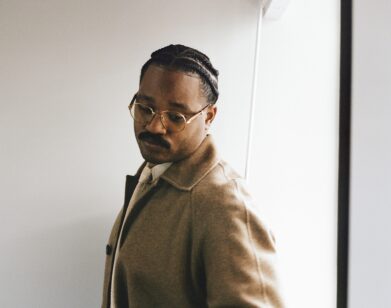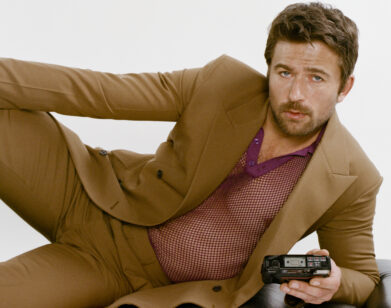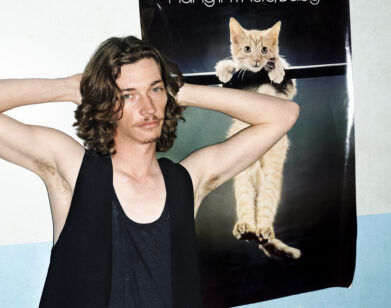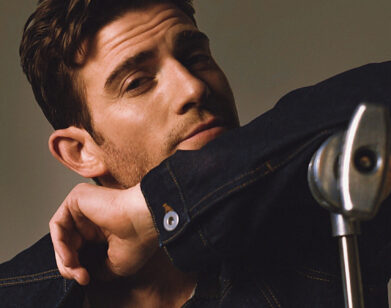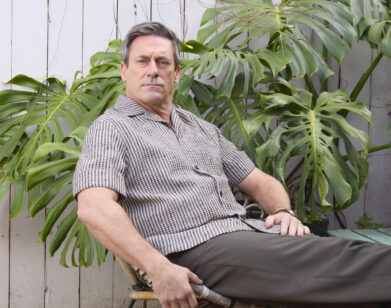Kim Longinotto and the Breakthrough of Brenda Myers-Powell
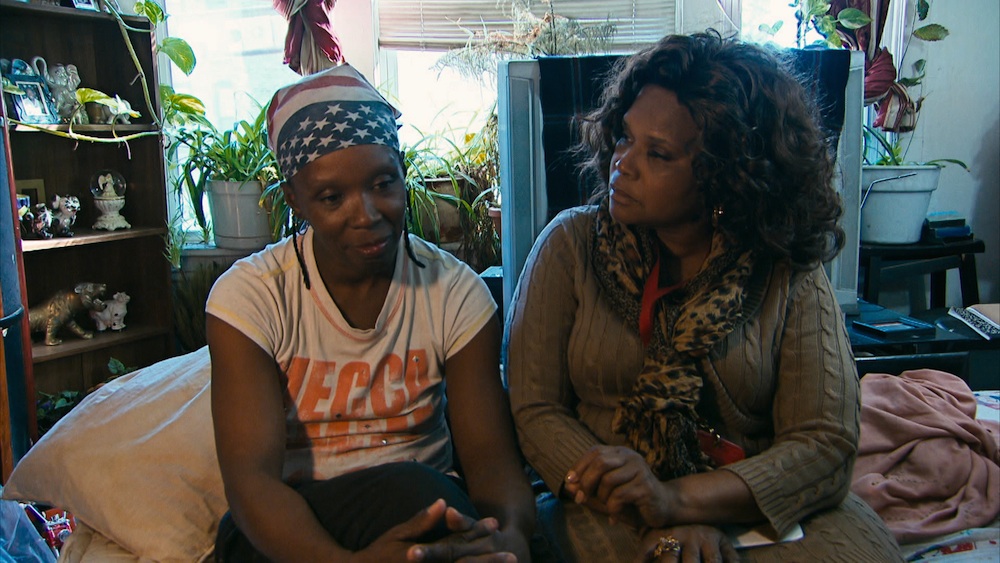
ABOVE: BRENDA MYERS-POWELL (RIGHT) WITH HER SISTER-IN-LAW MELODY IN DREAMCATCHER. PHOTO COURTESY OF RISE FILMS/SHOWTIME.
“Personally, I don’t like watching films about victims—people where you’re meant to think, ‘Oh, this is terrible,’ and you go home feeling really depressed,” explains British documentary filmmaker Kim Longinotto. “I don’t make ‘issue’ films,” she continues. “I like making films about rebels or pioneers or people that are doing something.”
Dreamcatcher, Longinotto’s most recent film, which won the documentary directing prize at the Sundance Film Festival in January and will air tomorrow night on Showtime, is first and foremost a film about real people. Brenda Myers-Powell, the protagonist and founder of The Dreamcatcher Foundation non-profit, is a former prostitute and addict. She’s warm, charismatic, and extremely compassionate. She devotes her life to helping other woman around Chicago: women who have been incarcerated for prostitution-related offenses, at-risk teenage girls from the local high school, and unknown women walking the Chicago streets at night. She holds out her hand and her past experiences, and some women take it, but a lot of them don’t. They’re not ready yet, and Brenda understands. For 25 years, she wasn’t ready yet either. “I fell in love with Brenda,” says Longinotto, who has been directing docs since the late 1970s. “I thought if I watched a film about this person, it would give me energy and hope.”
Myers-Powell is not, as some reviewers claim, a saint. That’s what makes her so admirable and affecting. There are days when she works herself up over something as trivial as what wig to wear, or something not at all trivial, like her guilt over the girls she brought to her pimp when she was a prostitute. She has been, as she explains in the film, both the victim and the victimizer. Ultimately, she’s a survivor. “I think the reason real people love talking to Brenda is that she’s not going to them as somebody who’s looking down at them,” adds Longinotto.
EMMA BROWN: The scenes when Brenda is at the high school working with the group of at-risk girls are very striking. There’s that first scene, where they find out about Brenda’s history of sexual abuse as a child, and can relate to her as someone like them. Then you feel the mood shift and their perception of Brenda shift when they meet her daughter, and her daughter talks about being sexually abused as a child as well. Suddenly Brenda isn’t just like them; she’s like their mothers as well, and you can see them struggling to reconcile that.
KIM LONGINOTTO: I think the first scene, where the girls all start talking to her, she was absolutely shocked when it happened. You can see she’s lost for words; she’s completely taken aback. She’s saying, “I’m going to show you how you can protect yourselves and not make the same mistakes that I’ve made.” But, one by one they’re saying to her, “It’s too late. I was four years old.” “I was nine years old.” The oldest one to be raped was 14. She was living at home and it was a family member—a much older person—and her parents weren’t listening to her and she had to leave [home]. Brenda had been with these girls for two years and they hadn’t said anything about it, and [then] they did on the very first time that we filmed, which I think some people might find amazing and maybe a bit confusing, but I didn’t find it amazing. The whole point was that nobody had listened to them. One of those girls said, “I told my mother every time it happened, but mum just cried and nothing ever changed.” Either nobody bothered to change it, or couldn’t change it, or they were told off, or they weren’t believed. When I say they were doing it for us, they weren’t doing it because, “Oh, I want to be in the film.” They were doing it because other people would see it and empathize with them and be part of what had happened to them for the first time. It was exhilarating when they started speaking out. I wound up giving them all a hug and saying, “We’re coming with you and this is the journey we’re going on together.” That’s what the whole film felt like. We never set anything up or asked anybody to do anything. I would never do that.
BROWN: Does not setting up the scenes in advance make it difficult to edit the film?
LONGINOTTO: It makes it very easy. I have a beginning, middle, and end, and I don’t film for long—about 20 hours usually for a two-hour film—so it’s easily watchable in a week for me and the editor. Once I know who the characters are, I only film those characters, unless somebody else forces their way into the film by a scene happening to them or we meet them by chance. That’s what happened with Diana. She wasn’t expected at all; she suddenly exploded right at the end of the film. It’s chronological, so that also makes it easy to edit. We edited it in about seven weeks. I meet all these American filmmakers that film for months and months, and it’s a mystery to me. I couldn’t make a film like that. I have to be very clear in what I’m doing and where it’s going, and be very disciplined about what I film. I know that sounds contradictory—you’re going on a journey, but once you know who your characters are, you become more disciplined and you film less and less.
BROWN: How long did it take to establish the characters? Was it instant?
LONGINOTTO: Well, Brenda was instant and Marie was instant. You kind of get this feeling like the first day at school: “I like that person.” And it goes two ways. It’s not that you have to force anyone to be in the film, it’s a mutual feeling.
BROWN: Do you think that documentary filmmaking should have a different purpose than making a fictional film?
LONGINOTTO: I watch mainly fiction. The films I like watching are films where you see people change, like with Boyhood. You see a moment in someone’s life where it’s a breakthrough. For me, the breakthrough in Boyhood is that amazing moment right at the end when he finds somebody he can feel relaxed with, and who will maybe be a friend for the rest of his life. I like that it doesn’t end in a love affair or marriage. It just ends in, “Wow, I found people I can relate to for the first people in my life. These people accept me, I like them.” There was something very personal to it, and you can have a personal relationship to it as well. I remember very clearly when I found my first soulmate, it was actually in my late 20s, that wonderful feeling of being accepted by people. Those are the films I want to make. I don’t want to make a film about, “Oh, those poor prostitutes!” Or “Oh, isn’t it terrible in Chicago!” I want to make a film where people think, “Brenda’s like me!”
BROWN: Have you ever considered making fictional film?
LONGINOTTO: The magic of documentary is that I keep being surprised and amazed by the things I film. It happened so many times in Dreamcatcher; there are so many scenes, where I’m thinking, “I could never have written this in a script.” And people wouldn’t believe it. The story of Ruth, Brenda’s daughter. The story of Melody [Brenda’s sister-in-law] and her son [Jeremy], and then Brenda adopting the son, and the love between Brenda and Jeremy and the funniness of it. And Brenda’s a character—she’s fabulous! Then there are moments like when you meet [former pimp] Homer for the first time, and he’s saying to the girls in the class, “Abusers start off real sweet, but then when they’ve got you, it’s impossible to get away,” and he’s talking about himself. And then he tells you he’s split into these two characters, Fancy and Homer. And then you meet his parents. I could have never imagined a script with a character like that in it. I could now, but I couldn’t before.
BROWN: Homer is such an uncomfortable character.
LONGINOTTO: He’s so uncomfortable. A lot of reviewers have said, “Oh, he’s a good guy now.” But I was very uncomfortable. I feel very ambivalent about Homer, like in the conference where he says, “I think I deserve a round of applause, I haven’t pimped for 13 years.” No, you don’t. You don’t deserve a round of applause, Homer. And why are you saying to Brenda, “I need teeth”? Why are you asking for sympathy? Why are you saying, “I wouldn’t be able to cope with prison, I chose this job because I’m not somebody that likes being confined”? Those girls don’t like being confined either.
BROWN: You can feel the discomfort when Brenda’s group of high school students meet Homer.
LONGINOTTO: Yes. When one says, “What are the things you feel bad about?” and he says, “I feel bad about my daughter dying.”
BROWN: And that’s it.
LONGINOTTO: Yeah! He’s an ambivalent character, and he’s also working with Brenda for good.
DREAMCATCHER WILL AIR TOMORROW, MARCH 27, AT 9PM EST ON SHOWTIME.

